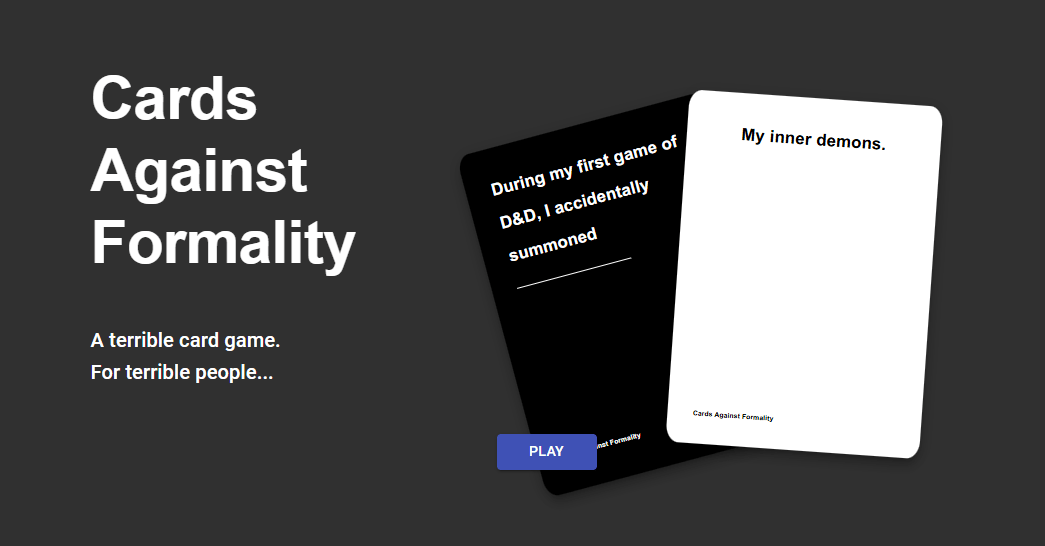Name of the Game: Cards Against Formality, an online adaption of the card game Card Against Humanity (CAH)
Game’s Creators: Jordan Pawlett and Aaron Speight on GitHub, based on the card game published by Cards Against Humanity LLC designed by the following individuals: Josh Dillon, Daniel Dranove, Eli Halpern, Ben Hantoot, David Munk, David Pinsof, Max Temkin, and Eliot Weinstein
Target Audience: This game is intended for 2-20+ players who are all 18+ years of age due to the mature content featured in the game. This game is enjoyed in a party setting as it helps maintain a comedic/ironic social atmosphere. Some of its content may be inappropriate for sensitive audiences.
Platform of the Game: Personal Computer (PC)
Cards Against Formality has a flexible standard for judging responses, it mainly depends on the sense of humor of the “Czar” who judges cards to determine the winner for that round. Since the Czar role changes every round, the new judge may use different metrics to determine a winner. Due to the raunchy subject matter, all judges chose cards that were either the most shocking, comedic, or potentially offensive (in an edgy, dark-humor, ironic way). Since I played this game with friends whom I’ve known for years, we were all comfortable with being shocked by some of the answer cards. We all trusted each other that no intentional harm was meant by any specific choice. The presence of potentially offensive cards helps the group test each other’s boundaries and highlight shared dark, crude humor among players in a low-stakes environment since we all understood that the objective is to be shocking. After discussing the experience with my friends, they all said that playing the game did not negatively affect how they viewed each other. This was reflected in the constant roar of laughter that would erupt after every other round when the answer card almost perfectly fit the prompt card. Nevertheless, if this game were to be played outside of its intended audience, like with new co-workers at a workplace, some of the offensive subject matter would be inappropriate and potentially cause rifts between players as expectations of respect and “off-limit” topics may not have been established beforehand, leaving players vulnerable to feeling offended over sensitive topics.
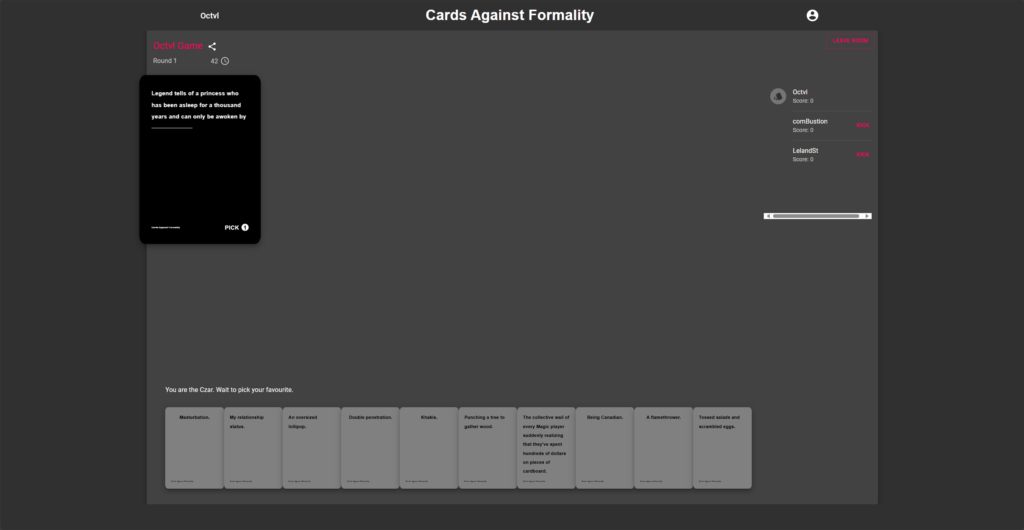
[Above: Czar POV]
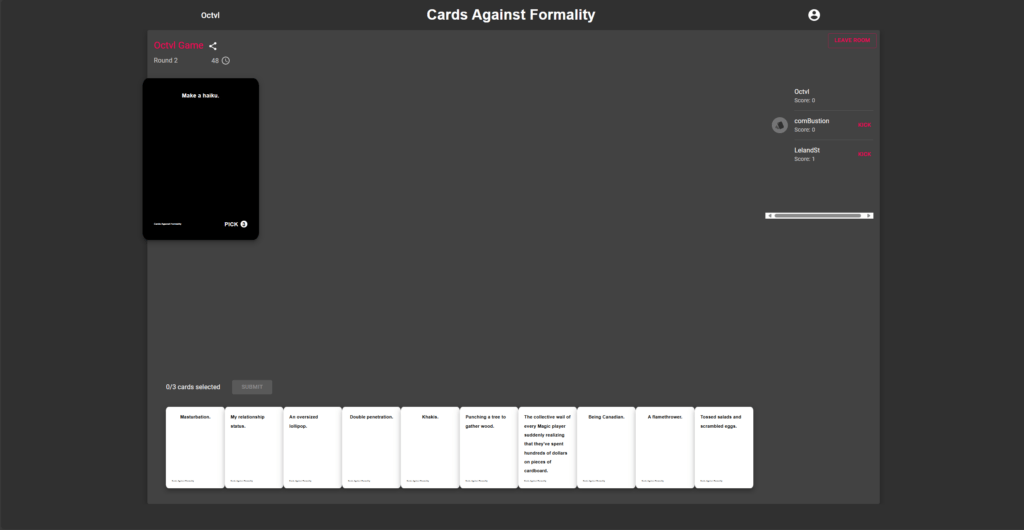
[Above: Player POV]
Since Cards Against Formality is an online adaptation of Cards Against Humanity, the card game, we used Discord to facilitate real-time discussions. However, a limitation of our approach was the lack of active webcams. Normally, the analog version of CAH is played in person where visible body language and tactile interactions are enabled. As a result, our playthrough mainly relied on disembodied voices with usernames to identify each player. This made “contagious” laughter less common, only arising when exceptionally funny/shocking cards were made. Laughs that would normally fill a room were limited by the quality/sensitivity of each player’s microphone and the volume at which each player’s audio was being played.
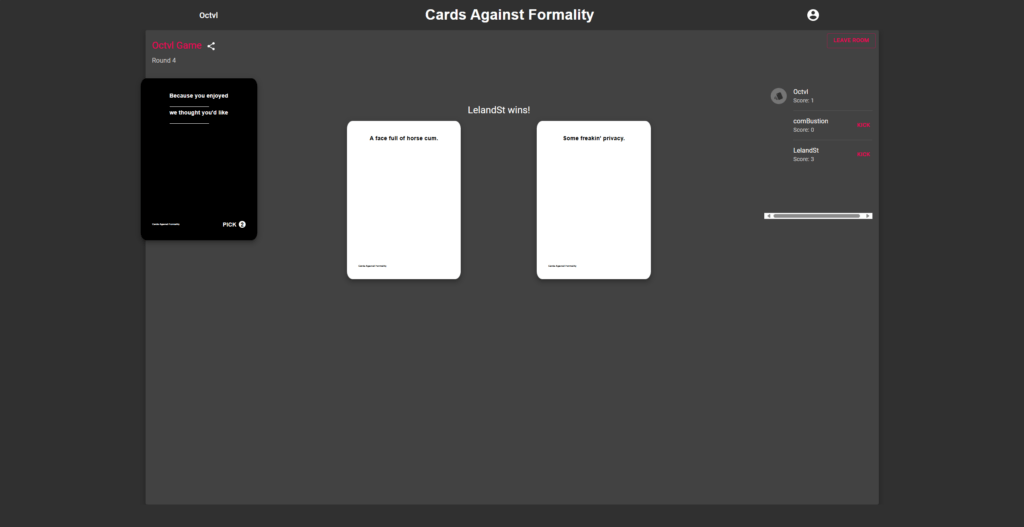
[Above: Decision Screen]
The minimal UI of the online version made it difficult to encapsulate the personality of each player; there was no face to connect to the player. If we had not used a third-party social media platform like Discord to help facilitate discussions, this experience would have been much more mundane as the online version lacked a meaningful mode of communication between players like a text chat or voice chat support. Including a game chat would help facilitate discussion between players who may not have a webcam or mic, as in the case where the game is played online with other strangers. The online version of the card game, What Do You Meme? included a room chat which helped accomplish this goal. Another flaw was the website layout; when the Czar was deciding on the best answer card, the prompt card would overlap and block text to the right of it. This issue may have been caused by my monitor’s native resolution, 1440p, which might differ from the 1080p Full HD standard. The inclusion of a timer was a good addition to the game since it would keep the game moving along and prevent indecisive/ inattentive players from interrupting the flow of the game. If the Czar did not make their decision before the end of the minute timer, no points would be awarded and the next round would start, skipping their turn as the Czar. Similarly, if the player did not make their decision before the end of the minute timer, they would not submit an answer card, effectively skipping their turn.
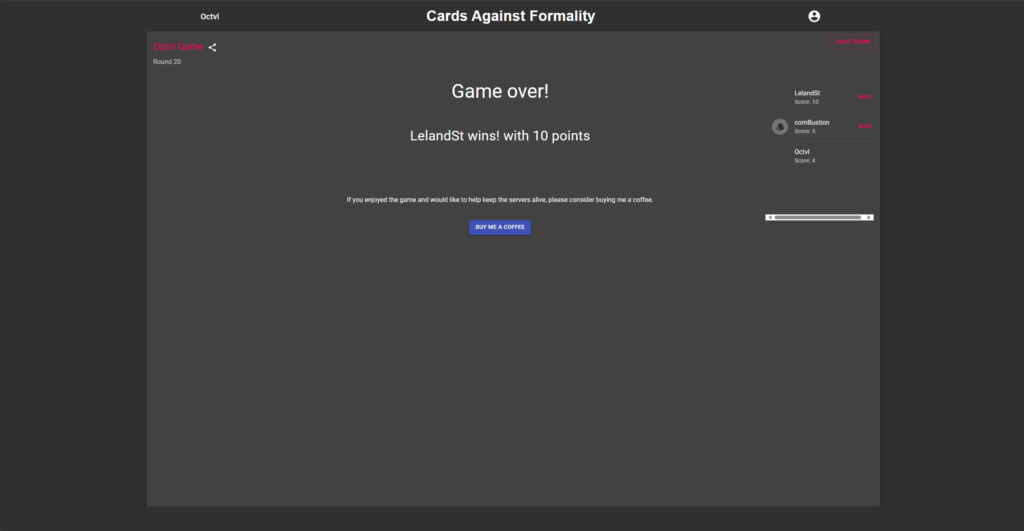
[Above: Game Over]


